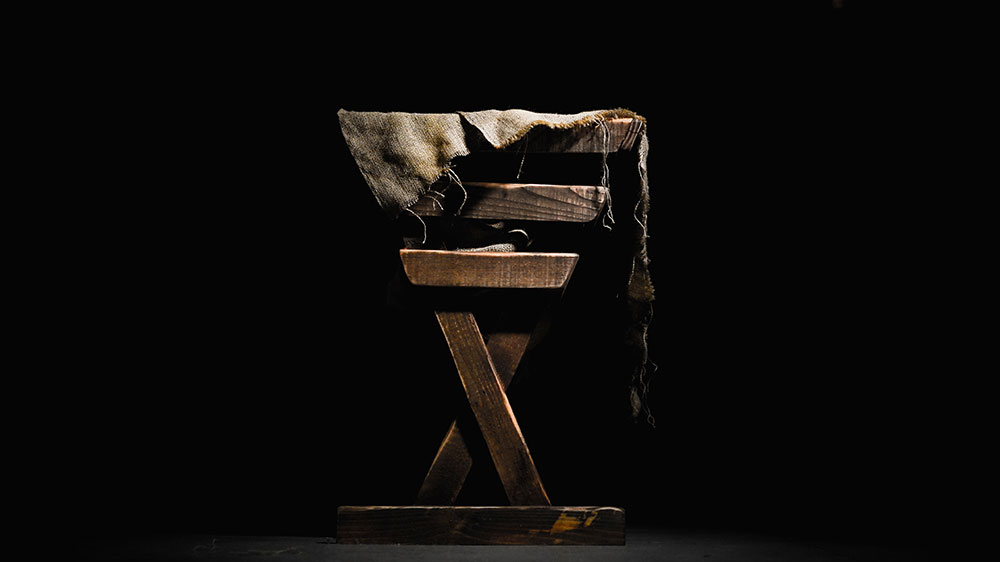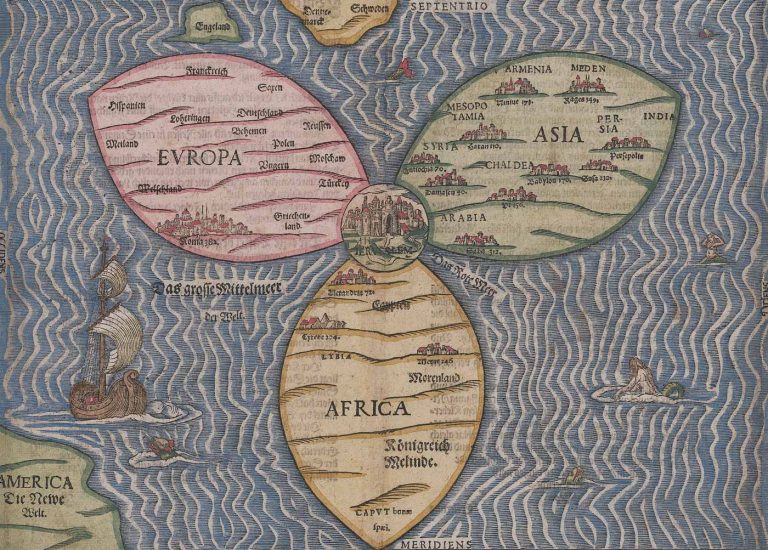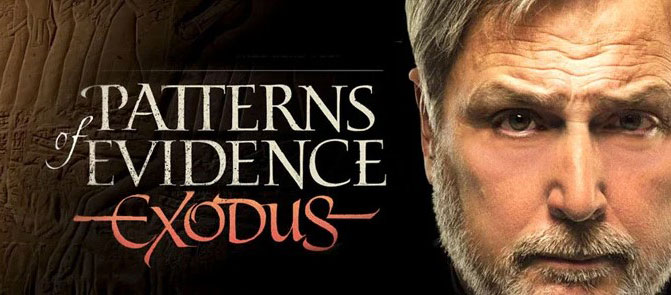Rejected and Alone? How tradition obscures the nativity story
You were lied to about Christmas. I am willing to bet that the Christmas pageant you’re used to featured a very important character: The Innkeeper. This heartless soul was so concerned with his inn having no-vacancy that he turned away the mother and father of Jesus. Leaving them to give birth to the messiah rejected and alone in a stable on the back forty.
This story is familiar to us. It provides a nice bookend for the gospel narrative. Just as Jesus was born into this world in a lowly state, rejected and alone; he died in a lowly state, a criminal on the trash-heap of the Roman Empire. The image of the rejected family is so ingrained that the standard manger scene leaves Mary giving birth in a lean-to barn, unsupported by anyone but a very nervous Joseph. Our Christmas carols celebrate Jesus meager beginnings and adopt a nearly naive understanding of his humanity. Thus “Away in a Manger” begins with,
No crib for his bed The little Lord Jesus Lay down his sweet head
and later notes that
The cattle are lowing The poor baby wakes But little Lord Jesus No crying he makes.
I have little doubt in my mind that little baby Jesus cried – often! “Gentle Mary laid her child” sings about how Jesus was laid
Lowly in a manger; There He Lay, the undefiled, To the world a stranger. Such a Babe in such a place, Can he be the Savior?
This narrative of meager beginnings simply ignores the cultural realities of first century Palestine. The innkeeper is likely a completely fictional character. His existence in our christian pageants is more reflective of Christmas traditions based on the culture, geography, and climate of New England than on the culture, geography and climate of ancient Bethlehem. What’s more the traditional narrative depicts Mary as derelict in not realizing her condition until the last minute and Jospeh as negligent in not being able to provide comfortable lodging for his very pregnant betrothed. Both assumptions ignore the cultural realities of the original nativity some two thousand years ago.
Simply put, the Lord of the universe was not brought into this world rejected and alone. He was brought into this world surrounded and loved by the very extended family into which he was born. The text of Luke’s nativity account is clear but we have obscured it with two thousand years of tradition.
Joseph also went up from Galilee, from the town of Nazareth, to Judea, to the city of David, which is called Bethlehem, because he was of the house and lineage of David, to be registered with Mary, his betrothed, who was with child. And while they were there, the time came for her to give birth. And she gave birth to her firstborn son and wrapped him in swaddling cloths and laid him in a manger, because there was no place for them in the inn. (Luke 2:4-7 ESV).
Retelling the Nativity Story
The story we tell from this information should look very different from the Christmas pageants we are so accustomed to watching our children perform. It should begin with Joseph and Mary making the 11-15 day journey from Nazareth to Bethlehem well in advance of her due date, possibly even before her third trimester. Luke simply tells us that “while they were there, the time came for her to give birth.” There is no reason to believe that this was a last minute trip to Bethlehem. While there were generally limits on the amount of time hospitality would be extended to strangers; Joseph was a family member, a skilled craftsmen who could continue his work in Bethlehem as easily as in Nazareth.
The influx of family members for the census meant that Joseph’s relatives were playing host to a large number of guests from elsewhere in Judea. This meant that the upper-room or guest room was already occupied by the time Joseph and Mary arrived. The lower stables (inside the house) where animals were kept to warm the household in winter, was quickly cleaned out and arrangements were made for Mary and Joseph to stay there instead.
At some point in time, Mary realized it was time for the baby to be born. She likely told one of Joseph’s female relatives who promptly ran to fetch Bethlehem’s midwife. The midwife entered the house, removed any male presence, ritually cleansed the home of any evil spirits and gathered Joseph’s female family members. The midwife and Jospeh’s female cousins and aunts attended to Mary during the birth of Jesus, welcoming him into the world in their loving presence. Jesus would have been presented to Joseph, who, accepting his adopted son, used a nearby manger for his the baby’s bed. Thus, Jesus was born into this world, surrounded and supported by Joseph’s loving family
The In-most room
That story bears significant differences from the one we are used to, but they are differences that are demanded by a richer understanding of the cultural setting of Jesus birth. Perhaps the most striking difference is the location of the birth: inside the home of one of Joseph’s relatives. The translation of kataluma as “inn” has obscured this setting. In all likely hood this did not refer to an ancient hotel or paid establishment. Luke uses the term in 22:11 to refer to the room in which the last supper took place, as does Mark 14:14. We know from archaeological remains that in insula style houses this usually referred to the “upper -room” or “in-most room.” As the highest and most secluded room in the house this would have been the room guests were offered for lodging in order to honor both the guest and the extreme benefaction of the host. When Luke describes a paid establishment, a proper “inn,” he uses a different word (pandecheion) as in the case of the story of the Good Samaritan in Luke 10:34.
Frequently the in-most room or upper-room was placed above the in-home stables. Animals like sheep, goats, and donkeys were frequently kept inside the house for two reasons. First, bringing the animals inside protected them from predators and allowed the family to keep watch over them in relative safety. Second, during the winter months the animals provided a significant source of heat for those sleeping in the upper room. The census registration likely meant that Joseph’s family had a significant number of guests staying with them. By the time Mary and Joseph arrive the upper room was already occupied. Since the shepherds were in the fields at night, the stables were likely not being used to house animals. When Joseph and Mary arrived needing shelter the stables were cleaned and arrangements were made for Joseph and his young betrothed to stay there.
Ancient hospitality regulations
The complete and utter rejection of Mary and Joseph by Joseph’s extended family simply doesn’t make sense in a culture and society that depended upon hospitality regulations for survival. While hospitality was extended to strangers as a way of negotiating a village’s foreign policy, hospitality was demanded for members of your own family, tribe or clan. While the traditional position argues that Joseph’s family looked down upon Mary’s pregnancy, the fact that Joseph maintained his betrothal would have signified his adoption of the yet unborn child and the expectation that His family also accept Mary as his bride to be. To not offer Mary and Joseph hospitality in their travels would have brought shame to Jospeh’s extended family in Bethlehem. Had Joseph’s family failed to offer them lodging, surely Mary would have suggested they stay with Elizabeth and Zechariah, likely just a short walk away from Bethlehem (Luke 1:39-40).
What’s more, offering and receiving hospitality was couched in religious terms for the faithful Israelite. Israelites were expected to extend hospitality to strangers, alien sojourners and family, because they themselves were strangers in a strange land under the divine hospitality of Yahweh. Yahweh, not the Israelites owned the land. It was Yahweh, as a hospitable host, that provided for their benefaction and as such it was expected that the Israelites would extend that same hospitality to strangers and family (See especially Deuteronomy 26:5-11; Psalms 23:4-6; 29:12; and Isaiah 58:6-7). Had Joseph’s family failed to offer Mary and Joseph a place to stay they would be turning their back on their divine call to show gratitude for the blessings which Yahweh had bestowed upon them.
Midwives
My wife is nurse. I take great pride in knowing that nurse midwives may have been one of the oldest professions in history. I have little doubt that a skilled midwife attended to Mary during the birth of Jesus. Nearly every village of any considerable size had a professional midwife. Bethlehem would have been no different. Giving birth was a dangerous business for both the mother and child in the ancient world. Midwives had both clinical and legal authority during this turbulent period in women’s lives. Clinically, midwives ensured the safety of the mother and the newborn child by ritually cleansing the place of birth and initiating clinical interventions when necessary. Midwives would clear the house of any men, children and unmarried women. Frequently they used birthing stools, massage and music to ease the pain of labor. In the case of breach or inappropriately positioned deliveries more skilled midwives may have attempted turnings.
Legally, the midwife was responsible for the ensuring that the newborn was adopted into its new family. Having cut the umbilical cord, the unwashed newborn would be held up to cry. This cry “was considered a legal petition to join the household and become a member of the village” (Matthews and Benjamin, Social World of Ancient Israel, 72). Adoption and acceptance was indicated with a hymn of praise by the father. Having been adopted, the child would be washed and clothed, conferring legal standing in the family to the child. The fact that Jesus was wrapped in clothes and laid in a manger confirms that he was adopted into Joseph’s family, tribe and clan (Luke 2:7).
What it means for us…
While I don’t pretend that the way I have recounted the nativity story is the only way you might choose to envision Jesus’ birth. I do hope that this re-telling which attempts to attend to some of the cultural details of the first century world pushes back against the more traditional understanding of the nativity story. Scholars continue to debate the importance of the distinction between kataluma and pandacheion and whether or not that has any bearing on how we understand the nativity story. The greater force to be reckoned with though, are the serious breaches of hospitality regulations inherent in the traditional nativity account. The rejection of Mary and Joseph would have brought shame to Joseph’s family, no insignificant reality in a culture more attuned to varying levels of honor and shame. Finally, the traditional account fails to acknowledge the real presence and use of midwifes in the ancient world. Giving birth was a dangerous activity. It still is. Midwifes helped to mitigate the danger and ensured that the newborn was legally adopted into his new family.
Yes, Jesus was born in a stable, but that just so happens to be one of the few places childbirth might have normally taken place inside an extended family house. What’s more our images of Mary struggling alone with a panicked Joseph pacing back and forth are illusions. Jesus was born into the loving arms of Jospeh’s female relatives and likely Bethlehem’s better known midwives.
You see, God chose to become Emmanuel, God with us, not just to be a human, born of a mother and father, but to be a person with all of the familial relationships personhood implies. Yes, Jesus was born, Mary’s son, adopted by Joseph, but he was also adopted by Joseph’s family. From the very beginning, from his very birth, Jesus was bringing people together. The picture we should hold of the first Christmas is not just Jesus, Mary and Joseph with a few shepherds hanging about, but of Jesus, Mary, Jospeh, and a dozen extra aunts, uncles, cousins, second cousins, and a number of Shepherds excited to welcome this new boy into their family, tribe and clan. It is not the meager estate of Jesus that makes him good news to the poor, humble and outcasts, but the fact that he brought together the poor, the humble and the outcast at his birth that makes him such good news.
As he was born into this world bringing people together; his ministry, life, death, resurrection and ascension sought to bring people together. As you consider the birth of the messiah this Christmas may you remember well the words of the prophet Isaiah for “God has accomplished the birth of a savior the deliverance of Israel and gentiles alike” (Isa. 26:17-18). May you also remember that you, like Jesus, are not rejected and alone. If you look hard enough, seeking your fellow brothers and sisters, may you find that you are in this world, maybe for the first time, surrounded and loved.
May God’s blessings be upon you this Christmas season and may you remember that God’s greatest desire two thousand years ago was to know you in your full humanity.






